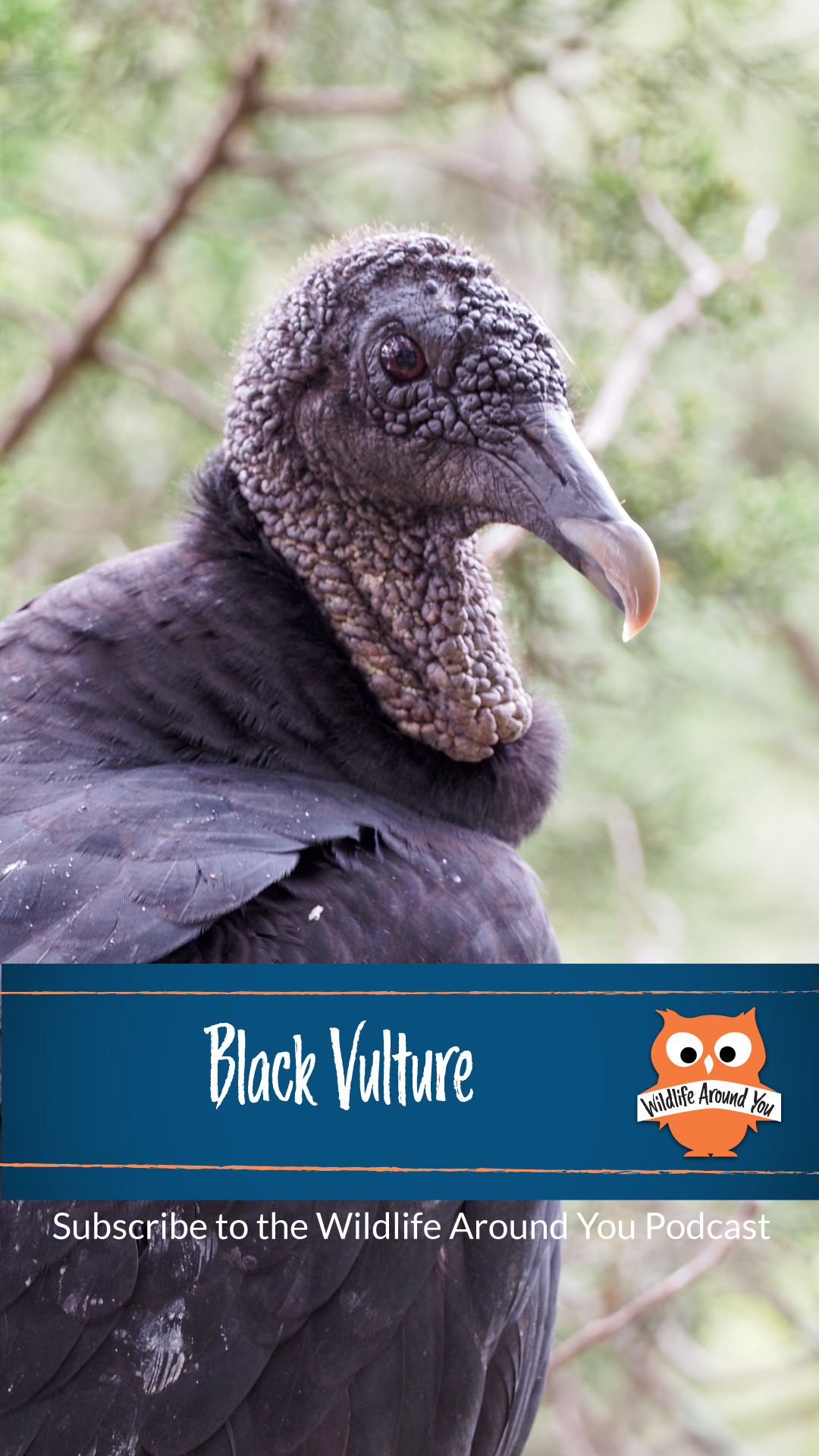Identification
- The black vulture is a large bird with a wingspan of around 5.5 feet and a length of 25 to 28 inches.
- It has a mostly black plumage, a featherless black head, and a hooked beak.
- Its legs and feet are grayish-white, and it has short, broad wings with a distinctive white patch near the wingtips.
Habitat
- Black vultures are native to the Americas and can be found from the southeastern United States to South America.
- They inhabit a variety of habitats, including forests, grasslands, savannas, coastal areas, and even urban environments.
- These vultures are highly adaptable and can thrive in both rural and urban landscapes.
Nesting
- Black vultures do not build nests or have permanent homes like some other bird species.
- Instead, they may roost in trees, on cliffs, or on structures such as abandoned buildings or communication towers.
- They typically choose roosting sites that provide a good vantage point to spot food sources.
- They lay their eggs directly on the ground.
Behavior
- Black vultures are social birds and often roost in large groups, sometimes numbering in the hundreds.
- Black Vultures aggressively prevent nonrelatives from joining them at roosts or following them to food sources. They attack each other by pecking, biting, wing-pummeling, and foot-grappling.
- They are generally silent because they lack a voice box, but they communicate with hissing or grunting sounds when interacting with each other.
Offspring
- Black vultures form monogamous pairs that usually mate for life.
- They lay one to three eggs in a scrape nest, which is a simple depression on the ground or in a hollow tree.
- Both parents take turns incubating the eggs for about 40 days.
- The chicks are altricial, meaning they are born naked, blind, and helpless. They rely entirely on their parents for food and protection.
- They fledge and leave the nest after about 70 to 80 days but may stay with their parents for several months before becoming independent.
Predators
- Adult black vultures have few natural predators due to their large size and the fact that they often associate in groups.
- However, their eggs and young can be vulnerable to predation by mammals such as raccoons, opossums, and large birds of prey.
Diet
- Black vultures are scavengers and primarily feed on carrion, which includes dead animals ranging from mammals to reptiles and birds.
- They have strong beaks adapted for tearing open carcasses, as they lack the ability to grasp and carry prey.
- They may also feed on trash or other organic materials when carrion is scarce.
- Black vultures often rely on their keen eyesight to locate carrion, but they may also follow other scavenging birds like Turkey Vultures, which have a keen sense of smell, to find food. Usually they will soar above Turkey Vultures to keep an eye on them.
Fun Facts
- Black vultures have an important ecological role as scavengers, helping to keep their environments clean by consuming carrion that could otherwise spread disease.
- One-on-one at a carcass, Black Vultures lose out to Turkey Vultures and Caracaras, but can take over a carcass as a group.
- The oldest Black Vulture on Record was over 25 years old.

